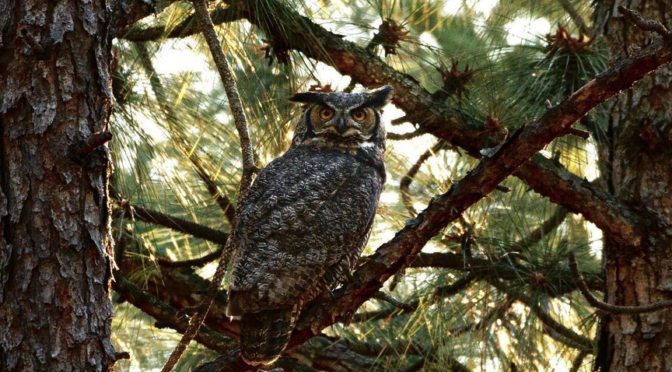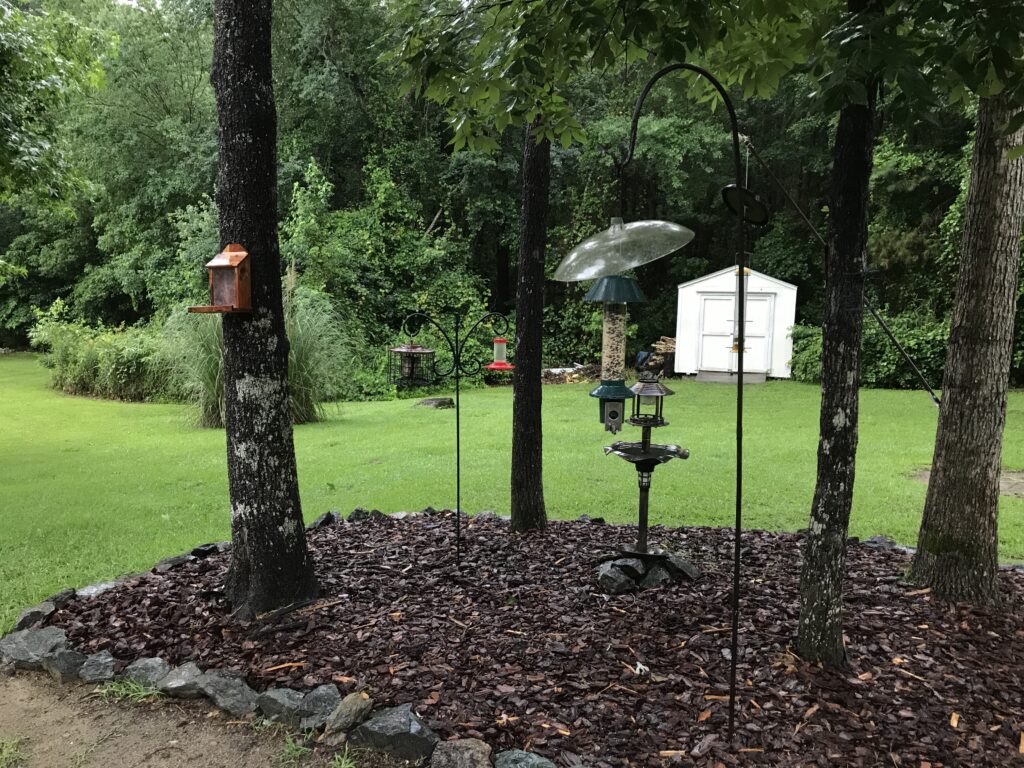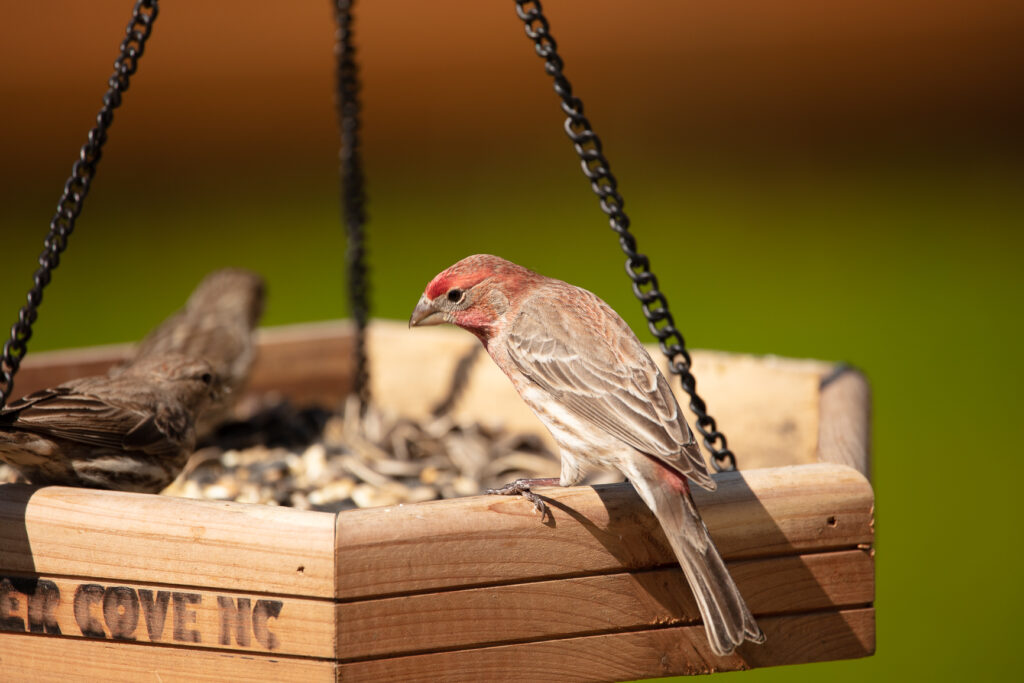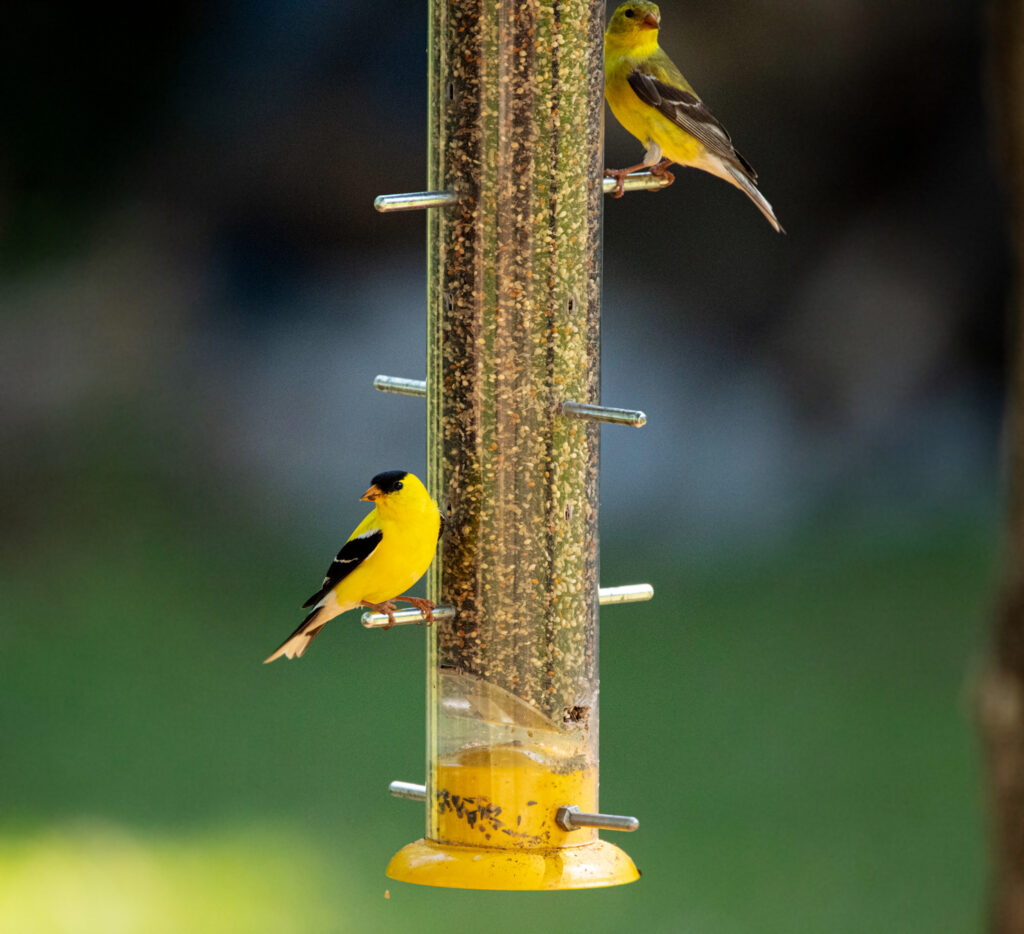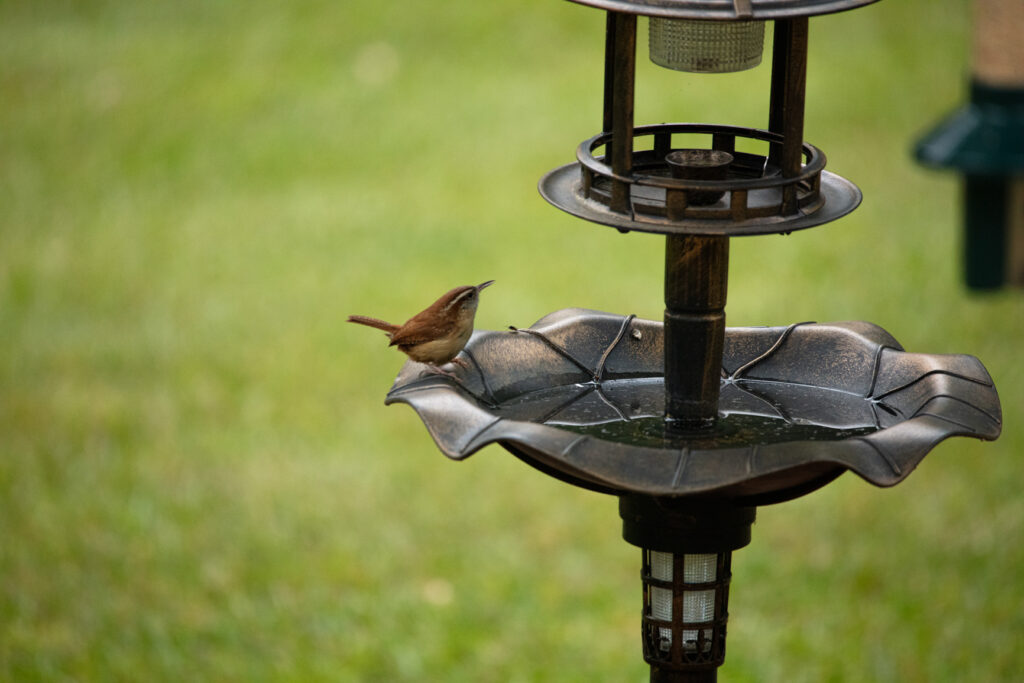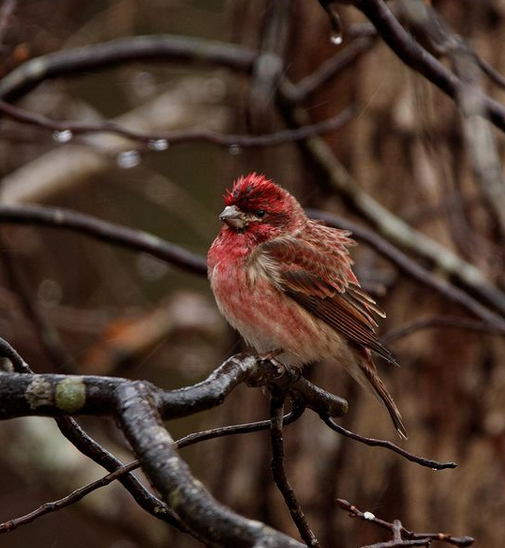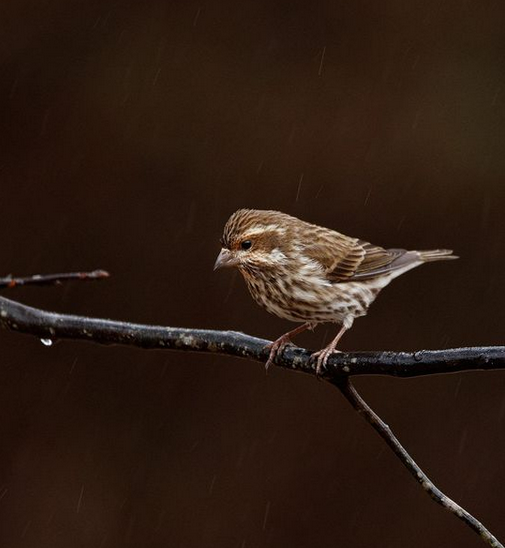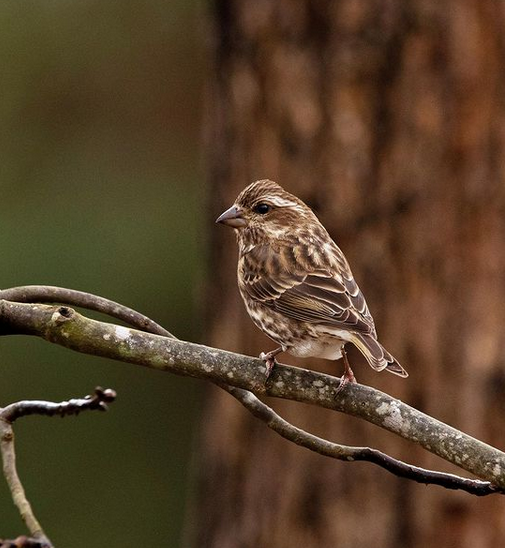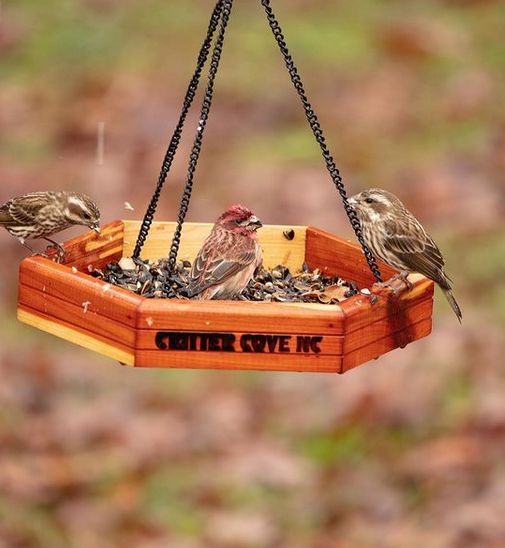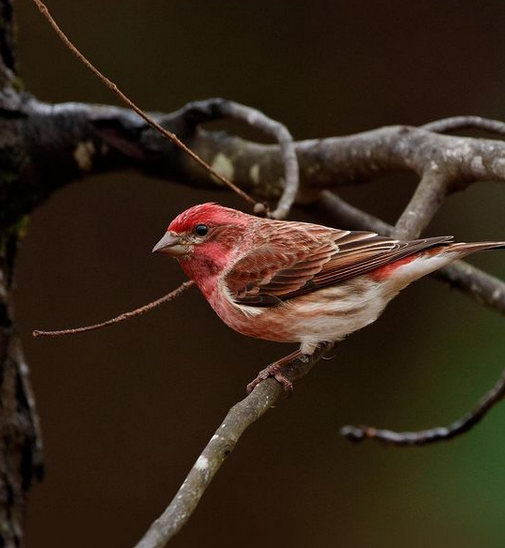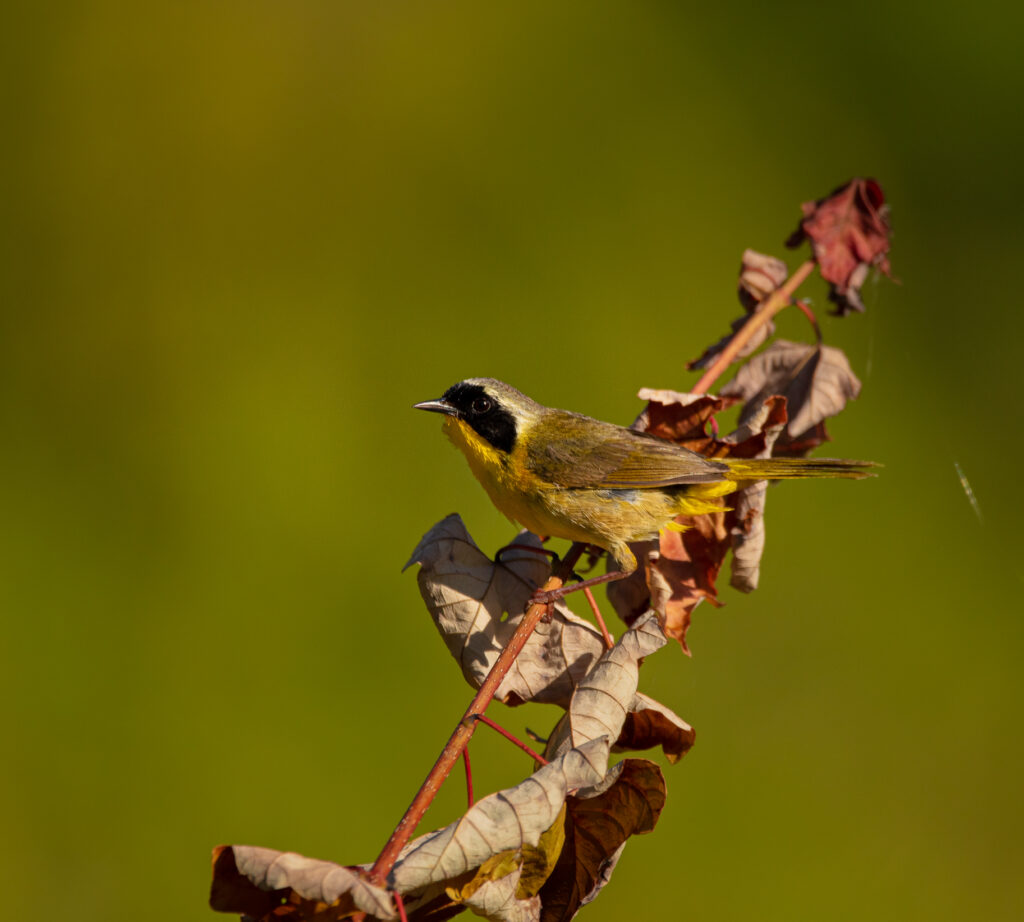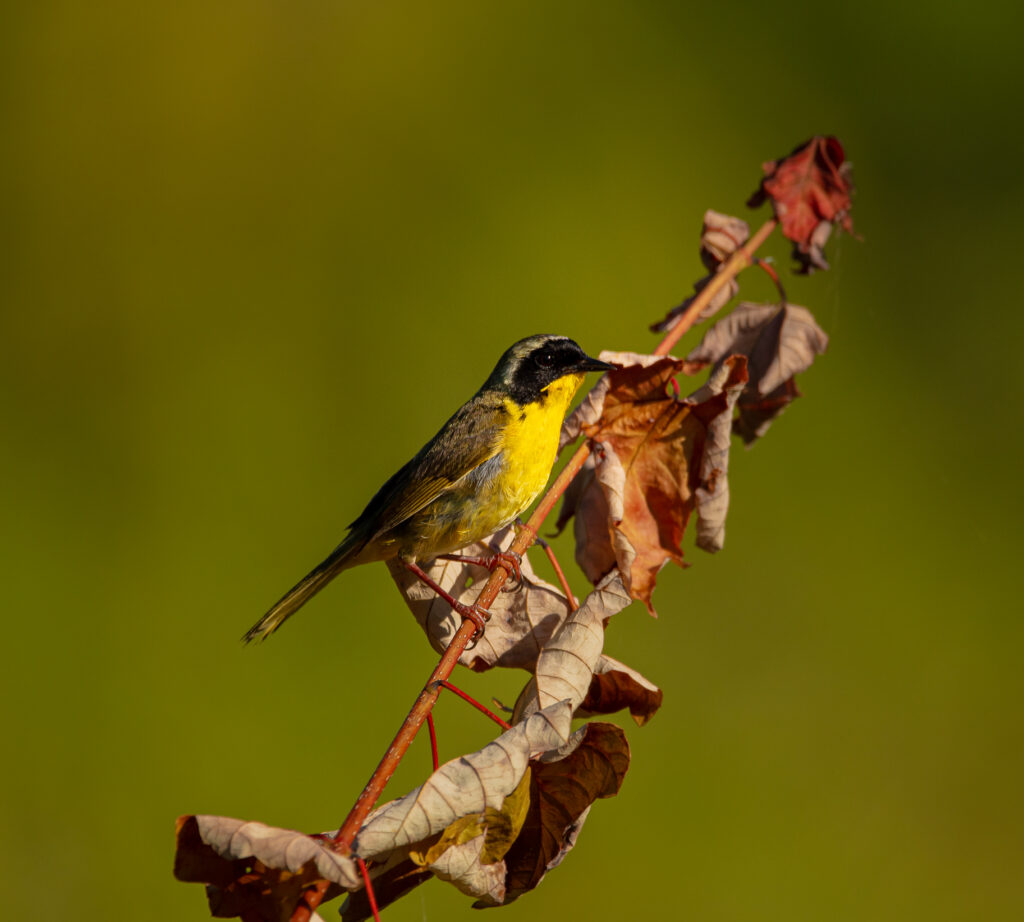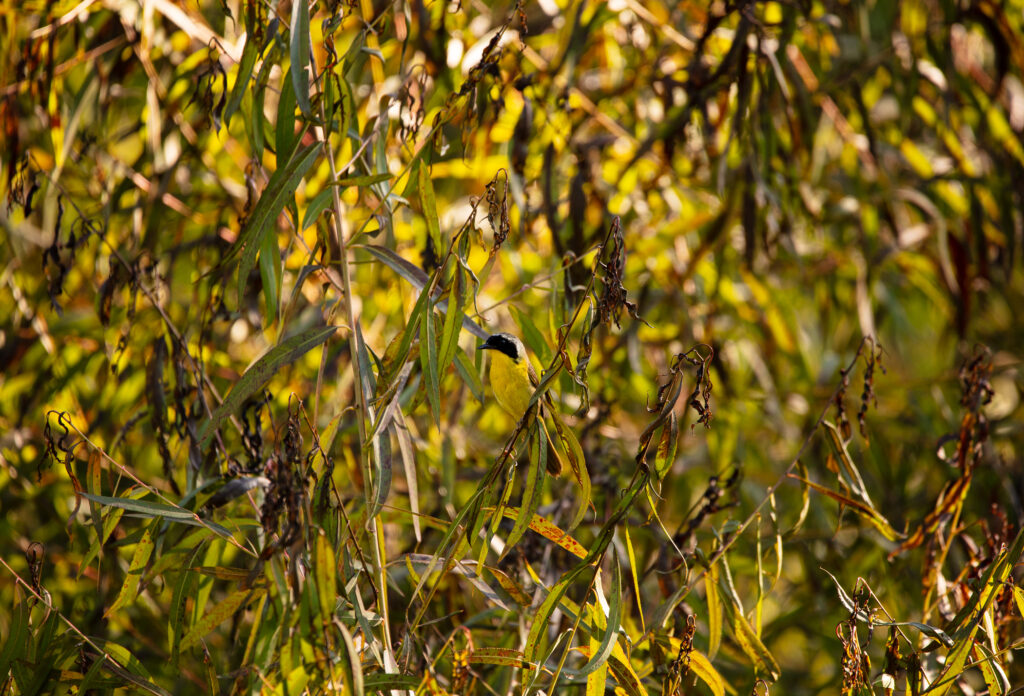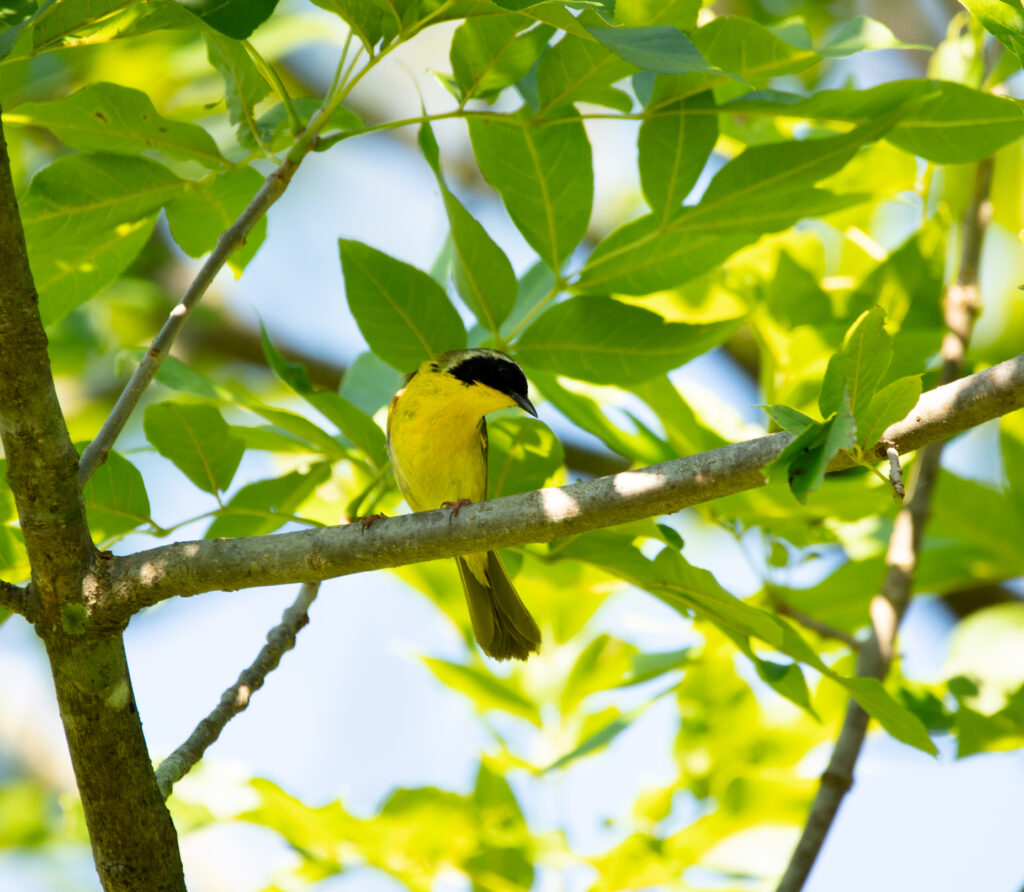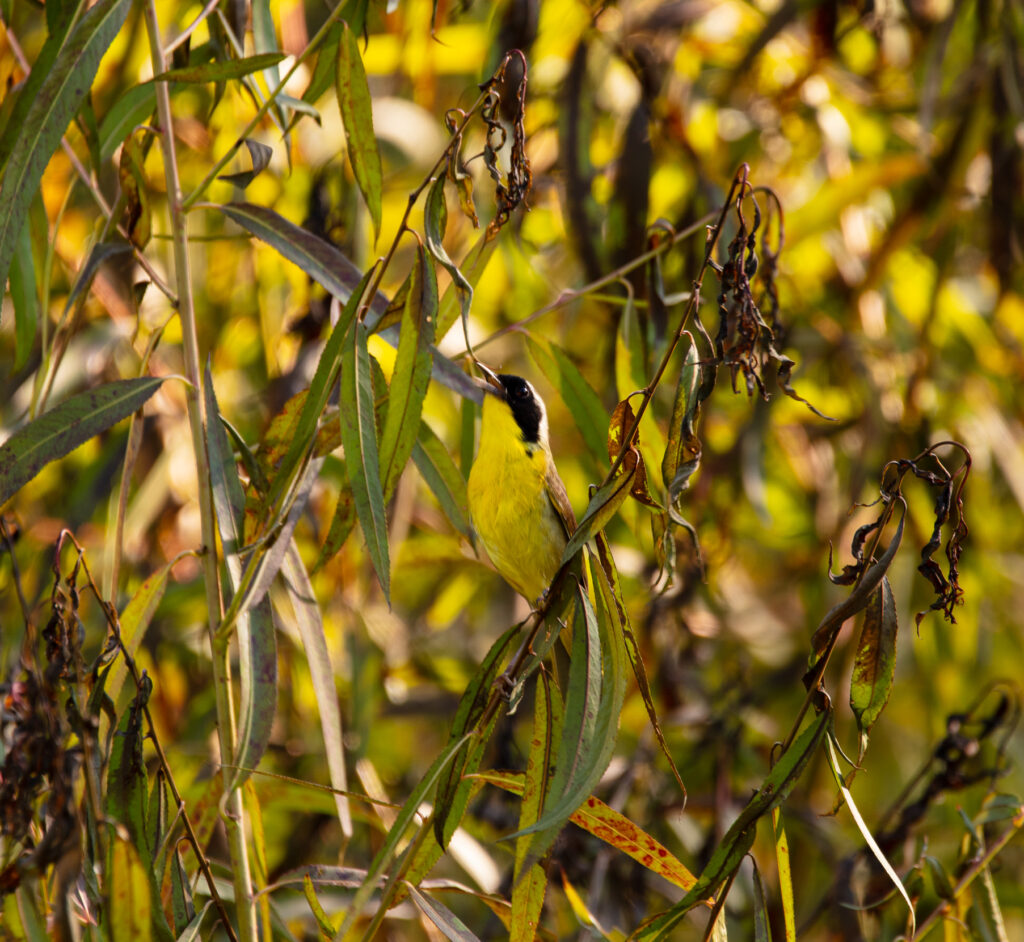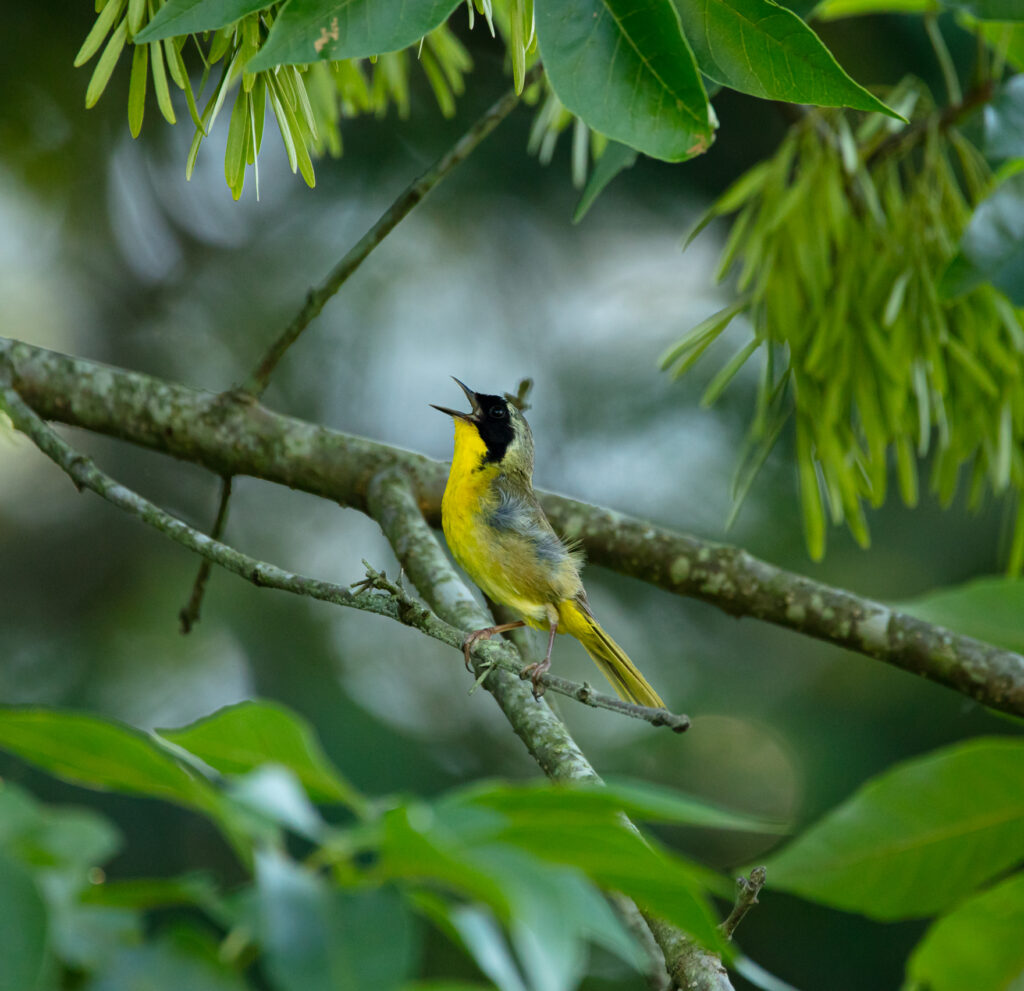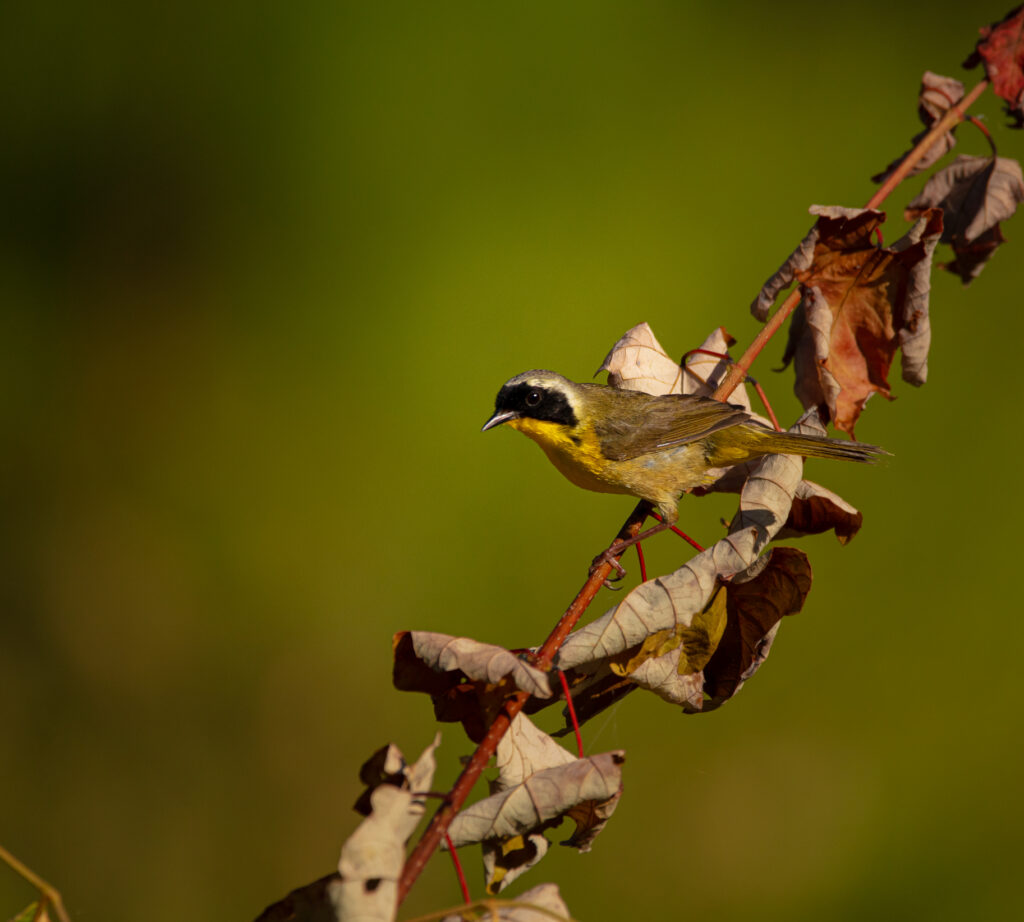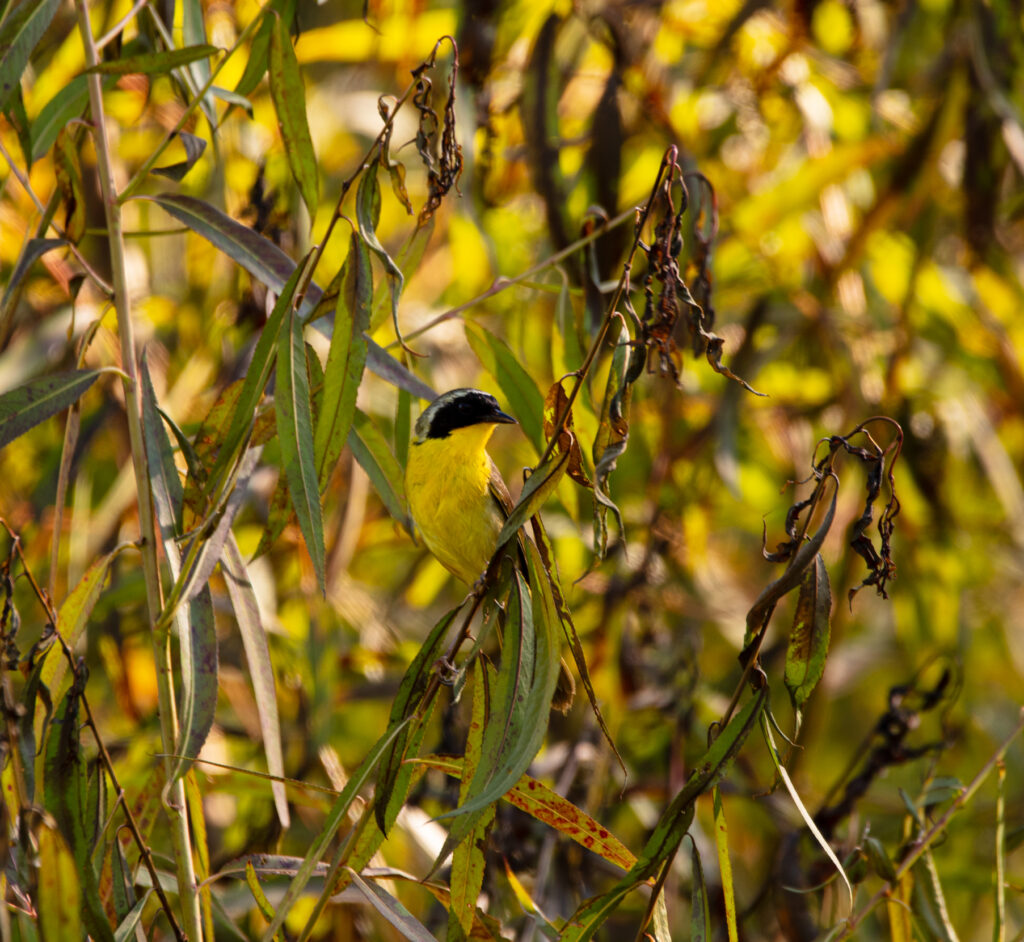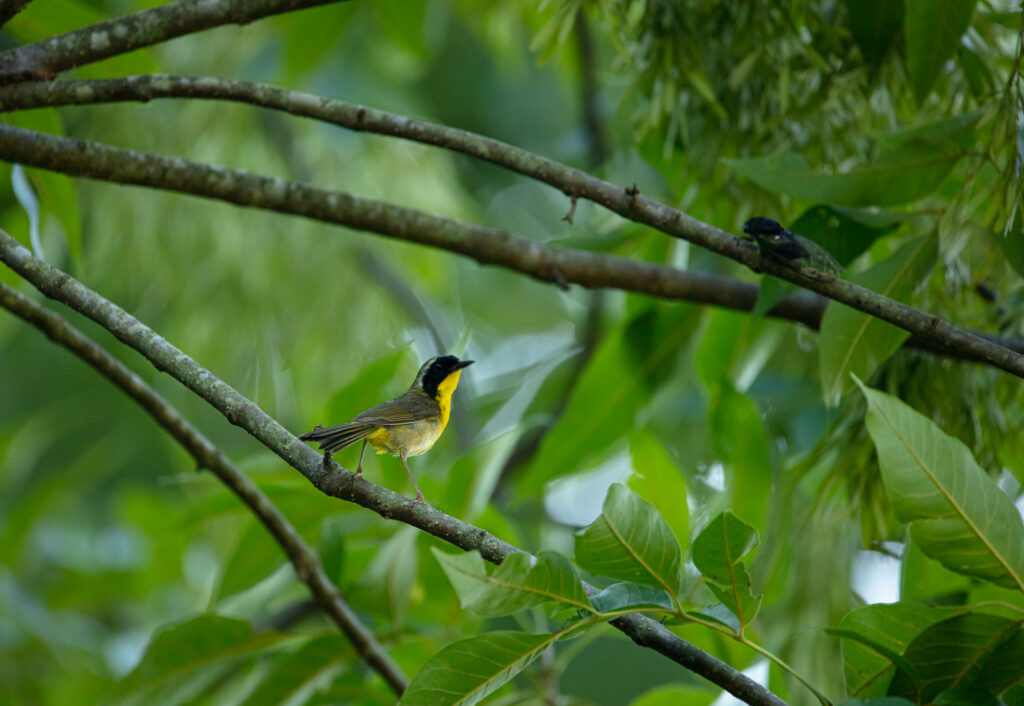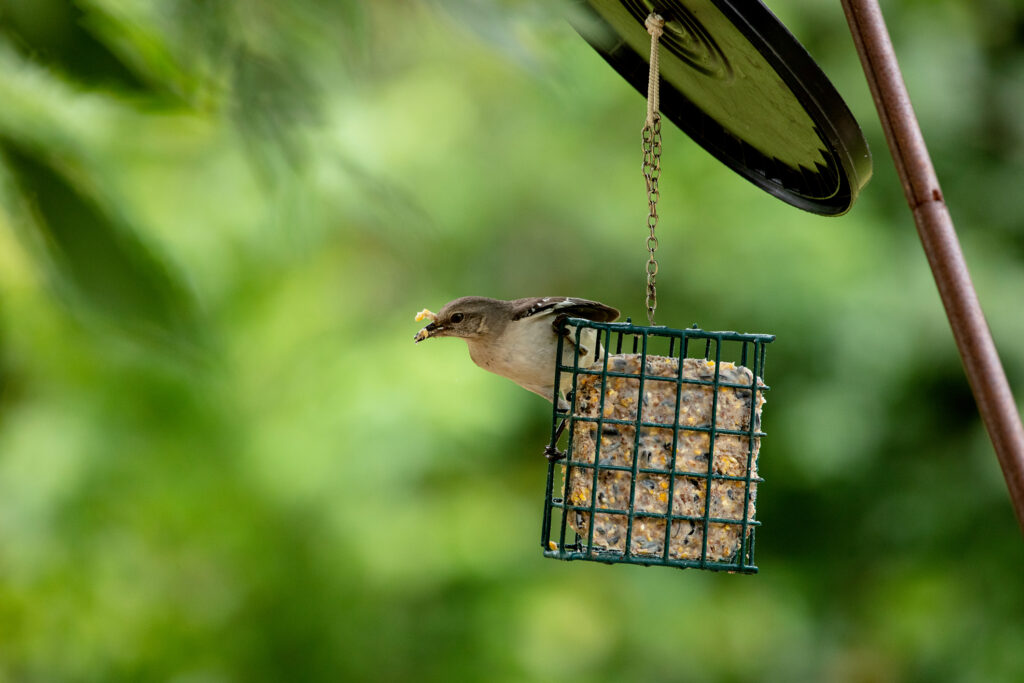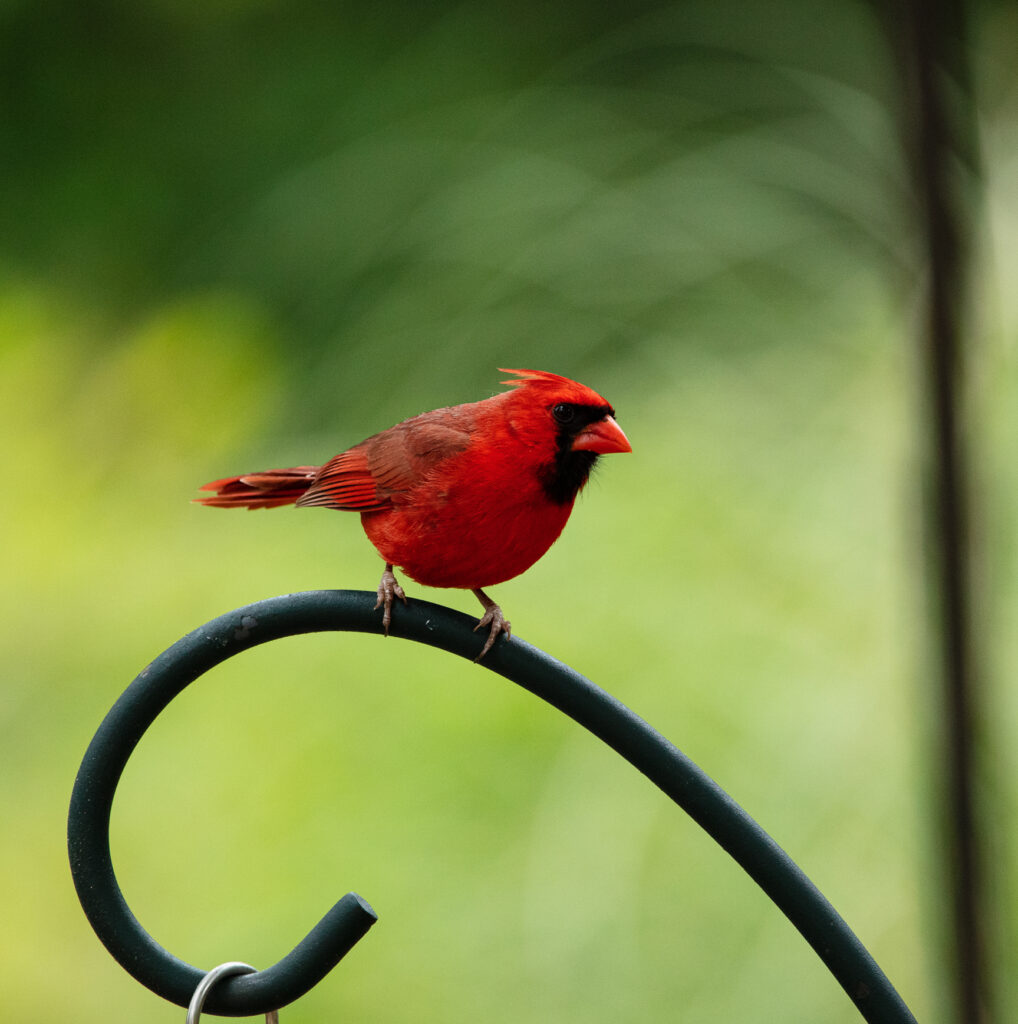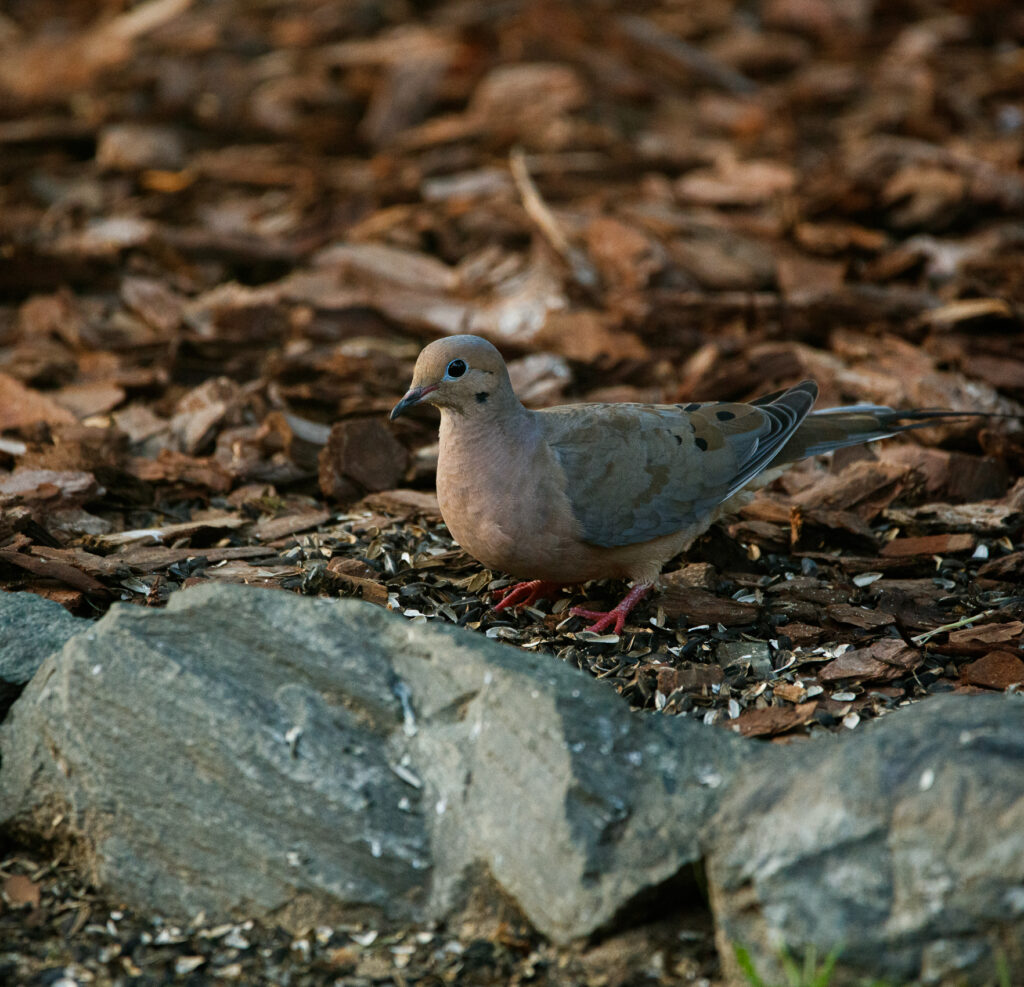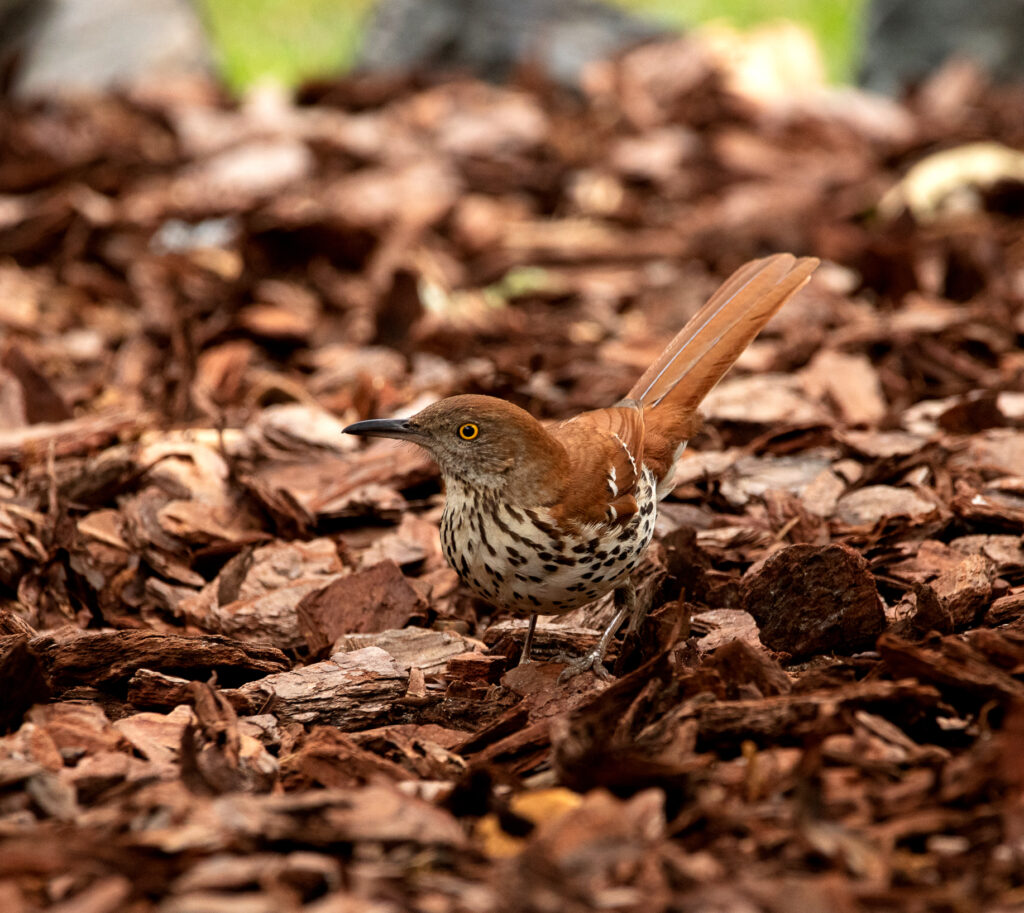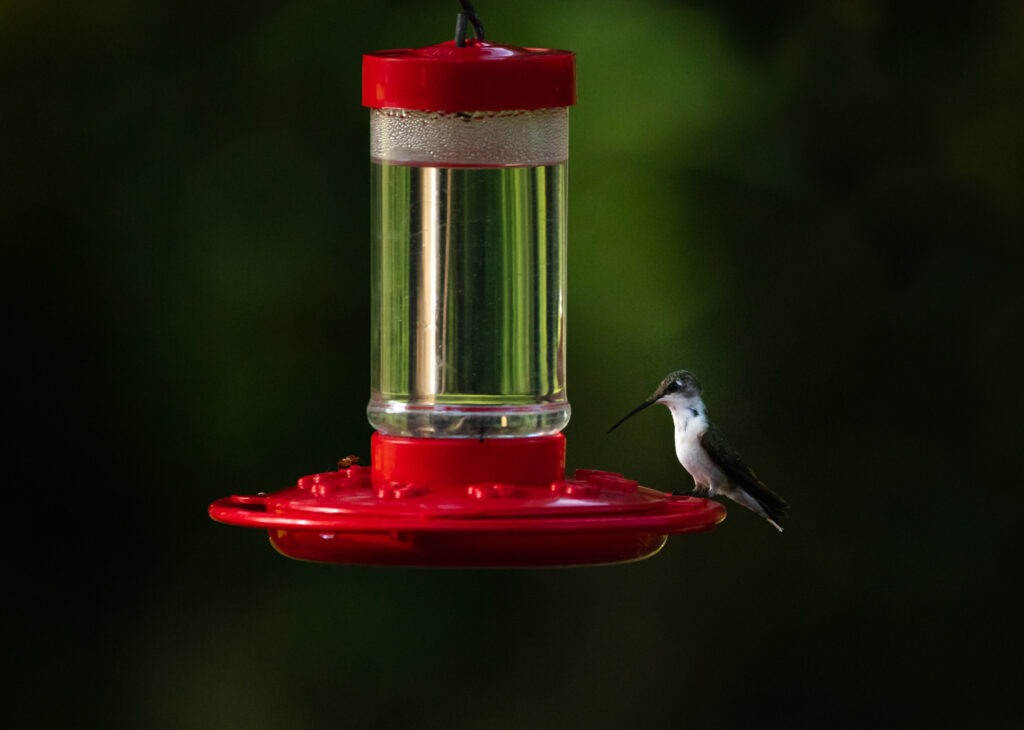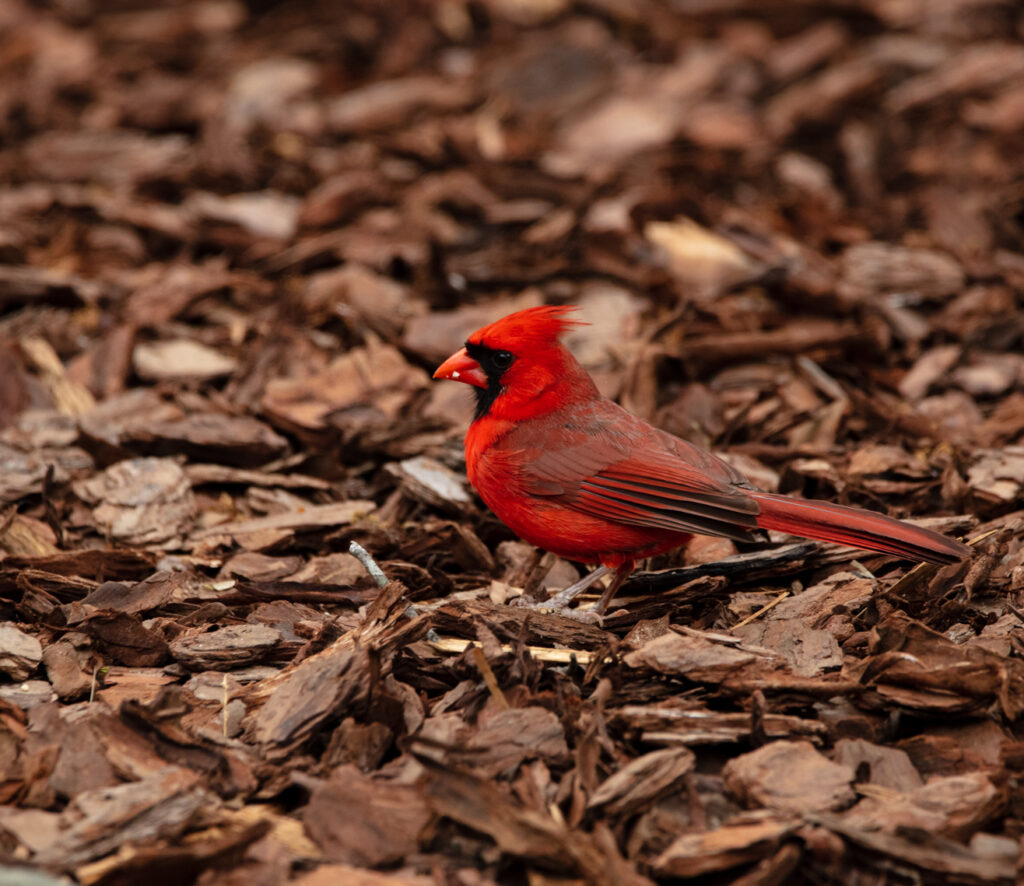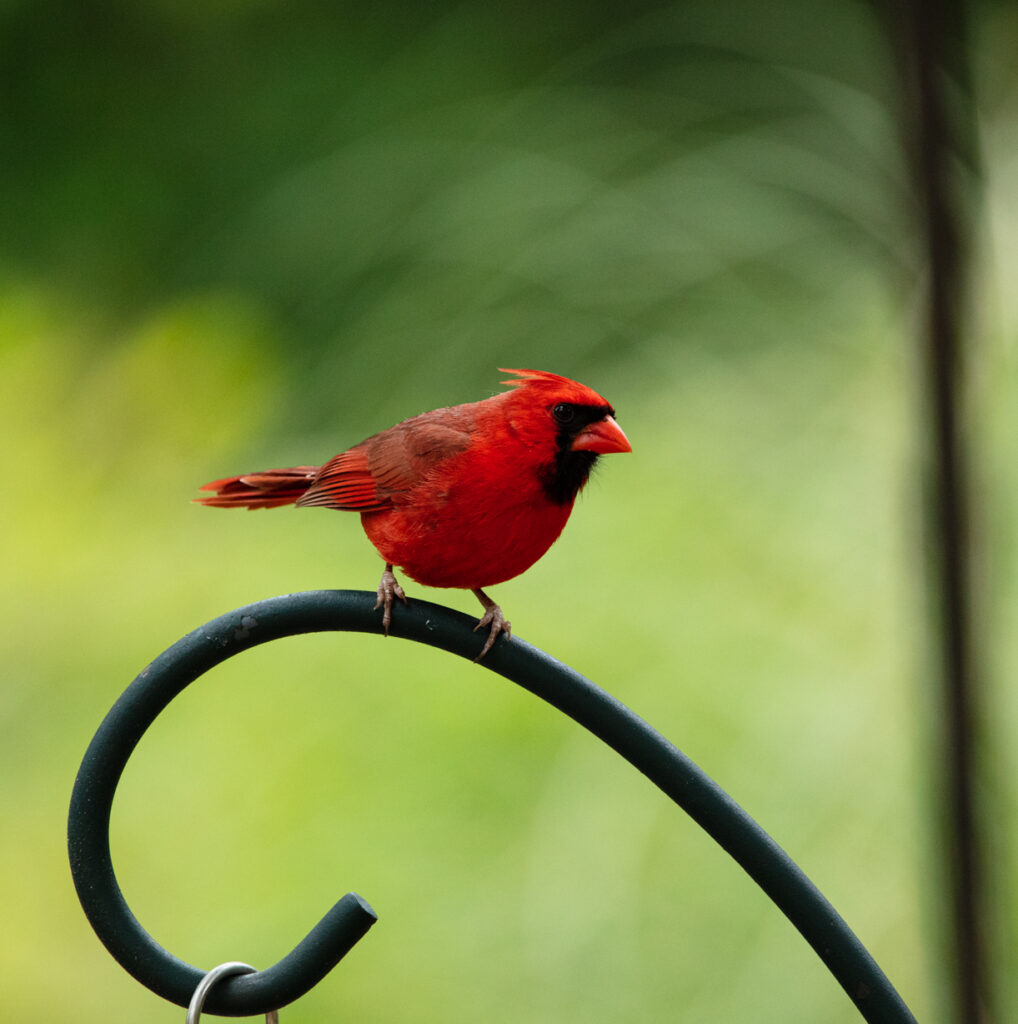By Sally Siko
With as much traveling as I do throughout the year chasing birds, I’ll be the first to admit that I haven’t given much attention to my feathered friends right here at home.
That changed in February when Michael offered to build me a bird and pollinator friendly yard.
Now I’d originally envisioned something low key.
Perhaps an 10×4 ft long strip of wildflowers and fruiting shrubs with a row of bird feeders skirting the row.
No big deal, just a pretty strip of flowers and feeders set off to the side of my backyard.
The thing is that my better half had a far better vision for the space!
This isn’t surprising given Mike’s extensive background in landscaping and his passion for gardening, yet I was blown away with the final results as this project far surpassed my expectations.
Here’s how we set off with this transformation from ho-hum boring grassy lawn to a beautiful backyard bird oasis!
Here is what the yard looked like before we started the work.


The first order of business was to remove the sod from about a third of my backyard to prep for planting.
We rented a sod cutter from Home Depot and got to work clearing three sections of the yard.
Two areas would be for planting flowers, trees and shrubs, the third will be a dedicated vegetable garden.
If you’ve never cut sod from the yard before I highly recommend that you buy or rent the most powerful machine you can afford. The idea is you want the cutter to work quickly and efficiently.
Another tip is to make sure that you have help moving the sod squares out of the cut area as they can be quite heavy to carry after pushing the sod cutter all day. I’m so grateful that Michael and my son were there to get this part done.
The adage “more hands make less work” applies here for sure lol!









Next up was tilling.
Again, don’t skimp on the price of a rental if you can afford to do so as the more powerful machines will get the job done in half the time.
Here’s a good tip: you can save money by purchasing a used high quality tiller.
Use it to complete the job, clean it off and then sell it after your done. We did that and actually made an additional $50 on the resale after the fact lol!










I also recommend that you cut the sod and till the dirt on days where the soil is dry. It’s much harder to carry the sod when it’s wet and tilling muddy dirt on a rainy day isn’t the most fun lol!
In addition, watch out for grubs and worms which will pop out from the freshly turned soil.


I picked up about a dozen grubs and put them on the top of my fence which the Bluebirds gobbled up immediately. A couple of happy Yellow-rumped Warblers found snacks hidden in the freshly turned dirt which was pretty cool too.
Mike also found a sleepy Bumblebee snoozing in the dirt which he carefully picked up and set free so that it wouldn’t get injured by the tiller.



Next it was time to build a pergola.
This was 100% Michael’s idea.
I’d told him that the yard was his blank canvas so whatever he thought would look cool while serving a greater purpose would be fine with me.
As it turned out this was a good move because now we’ve got a place to hang several bird feeders and a nice place to sit and enjoy the birds under the cover of semi-shade.
The pergola took about 3 days for Mike to build including construction and staining.
No formal plans were drawn out.
Just straight out of his brain into my yard, lol! It was neat to see how the structure came together in such a short time built with nothing more than scrap wood, concrete, wood stain and willpower.




Now it was time for the fun stuff, adding plants!
Although I absolutely adore my Hostas, Hydrangeas, Daffodils, Irises and Lillys, I really want this space to eventually be 90% filled with plants native to North Carolina.
I also didn’t want to have to spend a tremendous amount of money to fill the garden so I turned to Facebook marketplace to see if I could score a deal or two on some new plants.
As luck would have it, we ended up finding some nice native Blueberry and Elderberry bushes which we purchased from private individuals here in the Triangle.
I also scavenged a few raspberry and blackberry bushes from the woods behind my house and transplanted them into the yard too.
I’m really looking forward to seeing how happy the birds are going to be once these bushes start yielding fruit!


We also planted a ton of mixed wildflower seeds, scattering them by the handfuls throughout the garden.
I’d tell you what species they were but unfortunately I fucked up and threw away the seed packets and have forgotten exactly what all was in there lol!
It’s gonna be an incredible sight watching that array of color bloom in the backyard this summer.
Hopefully once the flowers come out, I’ll be able to identify them then.
In addition I thought it would be cool to see sunflowers outside my bedroom window so Mike cut out an additional bed and planted a ton of sunflowers and Zinnias too. I’m sure the neighborhood flock of Goldfinches are going to be stoked once those flowers go to seed.
Finally, it was time to plant a couple trees.
I’d already purchased a Peach tree a few years ago. Unfortunately I had planted it in a dumb spot too close to my fence (rookie mistake lol) so Mike dug it up and transferred it to a better spot in the new garden where it would have plenty of space to grow.
Next up was the Dogwood which had already been growing near the back corner of my yard. Again, Michael and I dug it up and transplanted into a better spot in the garden where it would thrive.
I’m hoping that the berries from this tree will provide the Cardinals in my neighborhood with plenty of nutritious food later this year.
Mike also picked up a beautiful little Apple tree which yielded a gorgeous cluster of blossoms shortly after planting it. The bees absolutely loved diving in and out of those flowers which was freak’n awesome!





With new plants in the ground now things were really starting to get exciting!
Still there was more to do.
Up next, mulch…
So.
Much.
Mulch.
10 yards to be exact.
160 wheelbarrow fulls.
Thank goodness the temperatures were in the 50s that day or we might have died from heat exhaustion haha!
Shoveling, pitching and spreading.
2 people, 6 hours = super tired but incredible results!








That mulch looked awesome. I love how the black contrasts with the green plants!











Now came some finishing touches.
Mike had some extra scrap wood left over from the pergola construction.
Not wanting anything to go to waste, he spent a couple hours and built a bench and a small patio at the back fence.
It’s a simple design with clean lines and set right at the perfect height for someone to sit and hold a camera comfortably.

To help make the birds feel at home Mike also built a couple of bird houses and installed them on top of the fence.
He also picked up a few cedar versions from WalMart that were only $12 a piece so that was a great deal!
It only took about a week before a family of Eastern Bluebirds and Carolina Chickadees took over to the nest boxes.
I’m so excited to see the sweet little birds raise their families later this spring!

We then picked up some pavers from Lowes and started lining the sunflower bed. As of the time I’m writing this post, we still have plans to line all the flower beds with these beautiful pavers which look like natural stone.
Hopefully we’ll get that done within a couple of weeks!




One of my favorite elements of the new garden area are these cool looking solar lights. They are pretty bright for a solar set up and really set off the design of the garden at night!
We’re thinking of adding some additional lighting on the back fence line to give the space more depth but still need to decide what kind of lights would look best.
I’ll keep ya updated 🙂



Lastly… the pond.
Errr what will be a pond lol!
I’ve got an idea to build up some dirt at the front end of the garden and install a waterfall trickling down into a creek which empties into a small pond at its base. The thought is that it will attract more birds into the yard to drink and have a bath. Plus, I really like the idea of listening to running water while sitting on my porch in the evening.
There is an offside chance that I might include some fish in the pond, perhaps catfish or goldfish. We’ve got a number of Great blue Herons in the area so I don’t imagine they would last very long, but it might be worth a try.

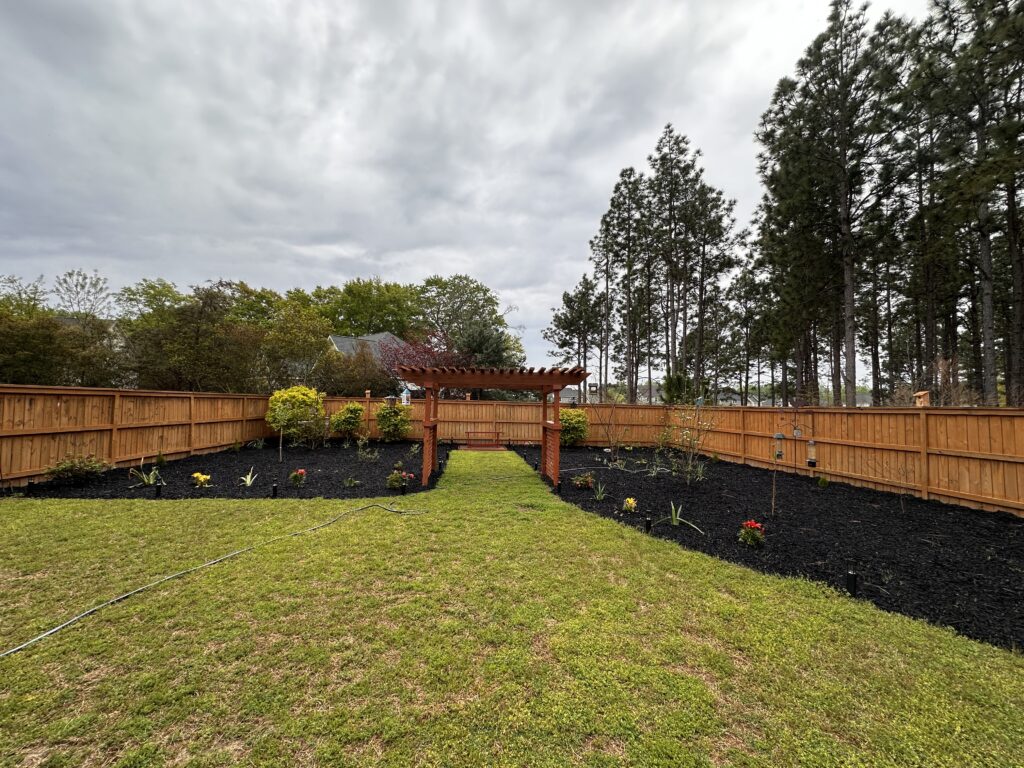
So there ya have it. This project took one month exactly to complete (February 28 to March 28th).
So far my backyard bird species count is up to 62 species and I can’t wait to see what new birds show up later this year.
Bird seed and suet was purchased at Tractor Supply Co. in Fuquay Varina, NC. It’s my go-to place to feed all my feathered friends! So far the favorite blend with my backyard birds is the fruit and nut blend and the warblers really love the berry flavored suet. Order some for your flock at the product links below!
Fruit & Nut Mix Wild Bird Food
Royal Wing Berry Flavored Suet
I’ve had backyard gardens in the past, but nothing like this. I’m still blown away by the transformation in the yard and could not be more grateful for Michael’s help.
It’s been hard work getting all this together in such a short time, but absolutely worth it!





































